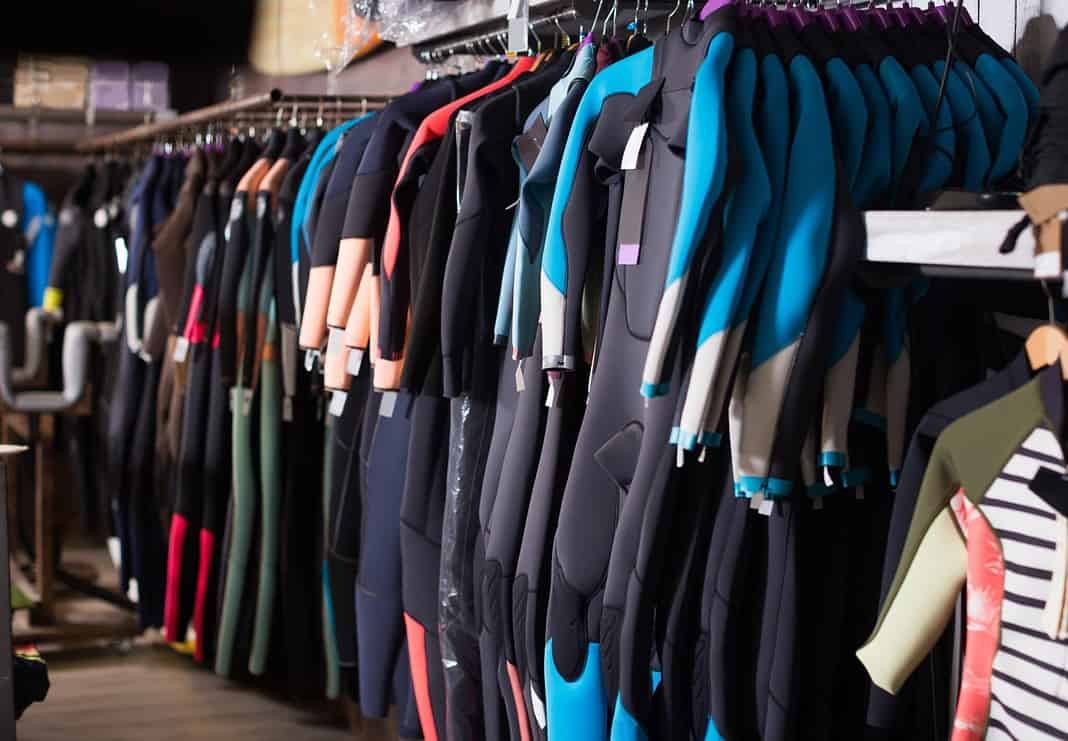As scuba divers and freedivers, maintaining an optimal body temperature is crucial for safety and comfort during dives. This comprehensive guide covers wetsuit temperature and thickness, ensuring you select the right gear for your underwater activities.
Wetsuit Thickness: Striking the Balance
When choosing a wetsuit, it’s essential to consider warmth, comfort, flexibility, and dexterity. While thicker wetsuits provide better insulation, they can also reduce mobility and lead to fatigue. This guide will help you navigate the intricacies of wetsuit thickness and neoprene materials and suggest necessary accessories for cold water dives.
RELATED: Understanding Wetsuit Measurements
Wetsuit thickness is measured in millimeters (mm), with two numbers often displayed: torso thickness and arm and leg thickness. The torso typically requires more insulation and will have thicker neoprene than the limbs.
Selecting a Wetsuit Based on Activity Different underwater activities require specific wetsuit thicknesses. We’ve provided recommendations for scuba diving and freediving.
Types of Wetsuits
There are several types of wetsuits available, each designed for specific needs and preferences:
- Full suits: Covering the entire body provides maximum thermal protection and is ideal for colder water temperatures.
- Shorties/spring suits: These wetsuits have short arms and legs, making them suitable for warmer water temperatures and providing greater freedom of movement.
- Farmer John/Jane suits: Sleeveless wetsuits with long legs, often worn with a separate neoprene jacket for added insulation and versatility.
- Semi-dry suits: Designed to minimize water exchange, semi-dry suits are suitable for cold water diving and feature built-in seals at the neck, wrists, and ankles.
Selecting a Wetsuit Based on Activity
Different underwater activities require specific wetsuit thicknesses. We’ve provided recommendations for scuba diving and freediving.
Choose the right wetsuit for scuba diving based on water temperature:
- Over 82.4°F: Bathing suit, rashguard, or UV protective dive skin
- 77°F – 80.6°F: 2mm shorty wetsuit or 1mm full suit
- 71.6°F – 75.2°F: 3mm full suit
- 62.6°F – 69.8°F: 5mm full suit
- 50°F – 60.8°F: 7mm full suit or 8/7mm semi-dry suit
- 41°F – 50°F: 8/7mm semi-dry suit or dry suit
- Under 41°F: Dry suit
Freediving Wetsuits
Select the appropriate wetsuit for freediving with these recommendations:
- Over 81°F: 1.5mm or 2mm full suit, or dive skin
- 75°F – 81°F: 3mm full suit
- 70°F – 75°F: 3.5mm or 5mm full suit
- 60°F – 70°F: 5mm or 7mm full suit
- 50°F – 60°F: 7mm full suit or 8/7mm semi dry suit
- Under 50°F: 8/7mm semi dry suit or dry suit
Special Considerations for Freediving Wetsuits
Freediving wetsuits differ from standard wetsuits in a few key ways:
- Compression resistance: Freediving wetsuits are designed to maintain their insulating properties under pressure, ensuring optimal warmth at depth.
- Flexibility: Increased flexibility in key areas, such as the shoulders and chest, allows for a greater range of motion and more comfortable breath-holding during dives.
- Low buoyancy: Freediving wetsuits are generally constructed with low-buoyancy materials, reducing the need for additional weight to achieve neutral buoyancy.
- Smoothskin or open cell lining: Many freediving wetsuits feature a smoothskin or open cell lining, providing better skin adhesion, minimizing water circulation, and enhancing thermal properties. However, these linings can be more fragile and require extra care when donning and doffing the wetsuit.
- Two-piece design: Freediving wetsuits often come in a two-piece design, with separate high-waisted pants and a hooded jacket, providing a more customizable fit and added insulation around the torso.
Other Things to Consider
In addition to wetsuit thickness and type, there are other factors to consider when selecting the right wetsuit for your diving needs:
- Fit: A properly fitting wetsuit ensures maximum thermal protection and comfort. It should be snug without restricting movement or circulation.
- Zipper placement: Wetsuits are available with back, chest, and no zippers. Consider your preference for ease of entry and exit and overall comfort.
- Material: Neoprene is the most common wetsuit material, but other options like limestone-based neoprene, Yamamoto rubber, or even eco-friendly materials are available. These alternatives can offer improved flexibility, durability, or environmental sustainability.
- Seams: High-quality wetsuits will have reinforced seams, like blind-stitched, glued, or taped seams, to enhance durability and reduce water entry.
- Personal tolerance: If you tend to get cold easily, you may want to opt for a thicker wetsuit or additional thermal layers for added warmth.
Remember that these are general guidelines for wetsuit thickness based on water temperature and activity. Consult with your local dive shop or instructor for specific recommendations based on their experience.
If you know you have a lower tolerance for cold, you can always add additional layers under a dry suit or wear a hood, booties, or gloves for extra warmth.
This is a sponsored post – for more information, please see our disclosure policy.

